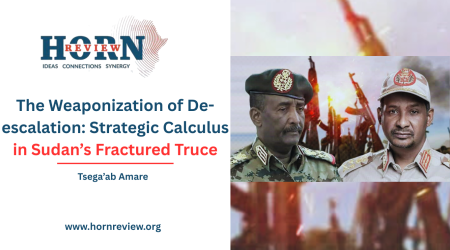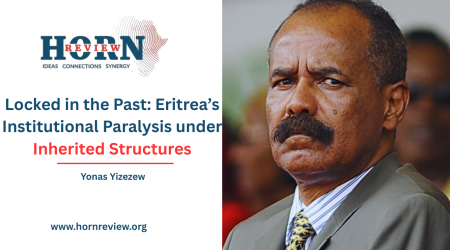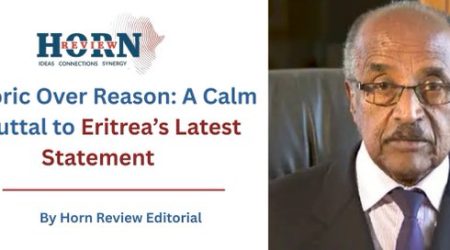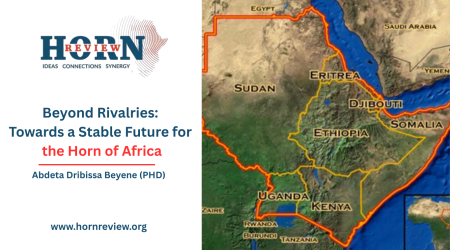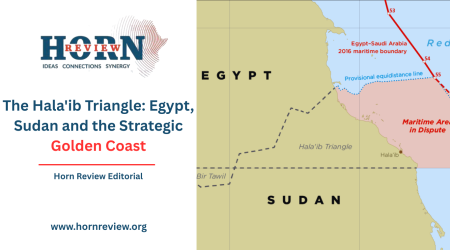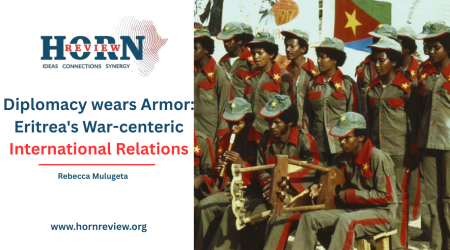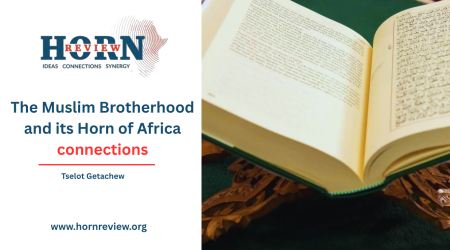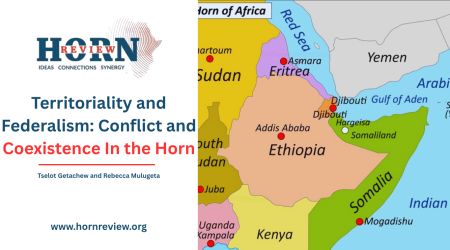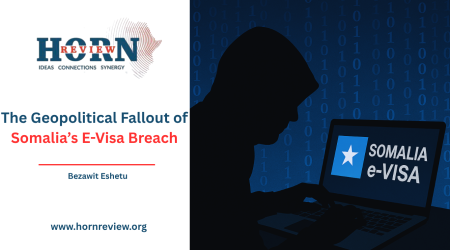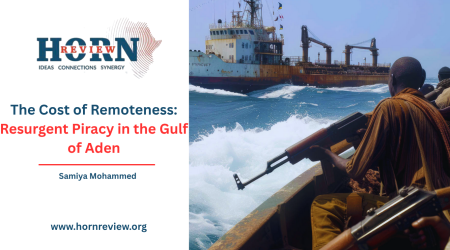
11
Oct
The Evolving Patterns of Eritrean Proxy Strategy in Ethiopia’s Northern Frontier
In the complex aftermath of the Pretoria Agreement, the dynamics of Ethiopia’s northern frontier continue to take on new layers of ambiguity. If the concept of “undefined relationships” illuminates the political disorder within post-war Tigray, a complementary lens is required to grasp the external currents shaping the region’s fragility. Central to this is Eritrea’s evolving proxy strategy, a doctrine that blends tactical patience with opportunistic interference, and which, according to recent remarks by former Interim President of Tigray, Getachew Reda, is now being strategically projected southwards into Ethiopian politics.
While Eritrea has historically lacked the demographic and military depth to wage sustained conventional war against its larger neighbour, its leadership has, through the years, cultivated alternative methods of destabilization. President Isaias Afwerki has long relied upon proxies and indirect engagements to unsettle adversaries, a pattern extending from Somalia to Sudan and, most persistently, Ethiopia. Getachew’s observations expose that Asmara, acutely aware of its limitations, has sought to destabilize Ethiopia by instrumentalizing disaffected actors within its borders, be they in Tigray, Amhara, or elsewhere, thereby exporting conflict while insulating itself from direct confrontation.
The testimony of Getachew, who himself presided over Tigray’s interim authority at a moment of acute transition, offers a rare insider’s perspective. He characterizes Eritrea’s current approach as one of calculated manipulation, wherein “useful idiots” are encouraged to fight wars that Asmara cannot wage openly. Such an account dovetails with reports of Eritrean logistical and political support to armed factions in Amhara, particularly the Fano militias, whose fragmented insurgency has kept federal forces tied down in a protracted campaign. At the same time, the emerging relationships between TPLF hardliners and Eritrean officials lends further credence to the claim that Asmara’s strategy rests upon widening Ethiopia’s fractures and rendering them unmanageable.
The implications of these entanglements are profound. Tigray’s political environment, already weakened by overlapping authorities and contested legitimacy, is especially vulnerable to outside manipulation. The Interim Regional Administration, set up to consolidate peace, has instead found itself caught between the legacies of the TPLF’s hierarchical traditions and the uncertainties of the Pretoria Agreement. Getachew’s account of a TPLF steeped in “totalitarian control” and resistant to self-criticism resonates with the broader concern that the party, even in its diminished state, remains capable of conspiring with external actors. The convergence of Eritrea’s strategic opportunism with the TPLF’s destructive thinking risks transforming Tigray into a staging ground for indirect confrontation, rather than a space for much-needed recovery.
Equally troubling is the revisionist discourse emerging among some TPLF figures, who now portray Eritreans as “brothers,” downplaying the alleged atrocities inflicted upon Tigray by Eritrean forces during the war. Such rhetorical recalibration, condemned by Getachew as cynical and dangerous, illustrates the extent to which political expediency can eclipse historical memory. For Eritrea, such shifts are convenient: they provide a veneer of legitimacy to an otherwise improbable partnership, allowing Asmara to cultivate influence within Tigray while maintaining plausible deniability.
The Pretoria Agreement, celebrated as a landmark in halting the carnage of the conflict, has since appeared increasingly fragile in practice. Although it secured a cessation of hostilities, its provisions remain only partially implemented, with the return of internally displaced persons delayed, demobilization contested, and Eritrean withdrawal incomplete. For Eritrea, Pretoria was never sufficient; Isaias had made clear his expectation that the TPLF be dismantled entirely. That the accord instead preserved elements of its leadership was viewed in Asmara as a betrayal, prompting efforts to ensure that Ethiopia’s peace would remain tenuous. The result is a peace that feels less like a resolution than a pause, haunted by the spectre of proxy violence.
The broader regional environment compounds this uncertainty. Eritrea’s alliances with actors such as Egypt underscore its willingness to situate Ethiopia’s vulnerabilities within a wider geopolitical chessboard. Meanwhile, Ethiopia’s persistent tensions, spanning Oromia, Amhara, and Tigray, provide ample entry points for interference. In this landscape, Tigray is neither isolated nor peripheral. Rather, its fragmentation renders it a linchpin of Eritrea’s calculus: a buffer, a pressure point, and most importantly, a proxy base.
At the heart of Getachew’s warning is the recognition that renewed war would not be borne equally. “Another round of conflict,” he cautions, “whether it involved the Eritreans or the Ethiopian federal government, would be a nightmare scenario for Tigray.” Such a scenario would again place civilians at the epicentre of suffering, repeating the devastation of the recent conflict. The re-militarization of Tigray, with its large pool of fighters and commanders now navigating uncertain loyalties, heightens the risk of local actors being drawn into externally sponsored confrontations. The line between “self-defence” and proxy service becomes dangerously thin.
In many respects, the dynamics unfolding today are not anomalies but continuations of unresolved questions left by both the war and the Pretoria settlement. The fundamental tension between the TPLF’s totalitarianism and the reach of federal authority remains unsettled; the role of the front in the administration of Tigray remains contested; and Eritrea’s enduring hostility towards a consolidated Ethiopia remains undiminished. Absent clear institutional safeguards, the interplay of these forces leaves Tigray exposed to external manipulation and the TPLF’s destructive reflex alike.
Moving forward, the challenge is twofold. Domestically, Ethiopia must reinforce the credibility of its transitional mechanisms in Tigray, ensuring that governance is oriented toward constitutional oversight rather than partisan dominance. Sustained vigilance is required to deter Eritrea’s proxy incursions, whether through diplomatic pressure, regional coalitions, or international monitoring. Failure to address either dimension risks perpetuating a cycle in which ambiguity becomes weaponized, and peace remains little more than an interlude between wars.
Getachew’s testimony recounts the failures of leadership or the perils of authoritarian tradition. It situates Tigray within a larger regional struggle, one in which Eritrea’s proxy strategy looms as a central destabilizing force. If “undefined relationships” capture the disorder of Tigray’s internal politics, then the proxy shadows of Eritrea expose the external pressures that threaten to unravel Ethiopia’s fragile peace. Together, these frameworks expose a precarious order in which the authority of governance blurs into the impulse for control, while political collusion shades into outright manipulation.
By Mahder Nesibu, Researcher, Horn Review
This analysis draws significantly on remarks by Getachew Reda from his recent public interview (YouTube): https://youtu.be/Iqb6daNGVpM?si=cUKv71hLAQzn8UOv

